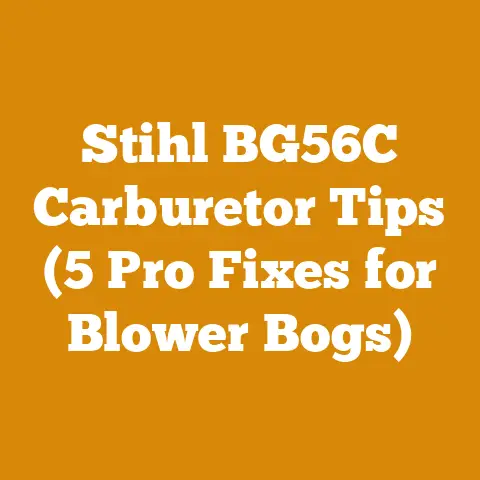Enclose a Porch for Winter (5 Pro Tips for DIY Woodworkers)
Enclose a Porch for Winter (5 Pro Tips for DIY Woodworkers)
Introduction: The Winter Porch Project – A Cozy Dream or a Budget Nightmare?
Decoding the Costs: A Deep Dive into Enclosing Your Porch for Winter
Enclosing a porch for the winter, while seemingly straightforward, involves a multitude of factors that influence the final cost. From the type of materials you choose to the size and complexity of your porch, each decision will have a direct impact on your wallet. Let’s break down the key cost components and explore how to make informed choices that align with your budget and your vision.
1. Material Costs: The Foundation of Your Winter Porch
The materials you select will form the very structure and insulation of your enclosed porch. This is where careful planning and research can save you significant money.
A. Framing Lumber: The Backbone of Your Enclosure
The type and amount of framing lumber you need will depend on the size and design of your porch enclosure. Pressure-treated lumber is essential for any part of the structure that comes into contact with the ground, while standard lumber can be used for the rest of the framing.
-
Cost Factors:
- Wood Species: Pine is generally the most affordable option, followed by fir and then cedar. Cedar is naturally rot-resistant but comes at a premium.
- Grade: Lumber is graded based on its appearance and structural integrity. Higher grades (e.g., Select Structural) are more expensive but have fewer knots and imperfections.
- Dimensions: The size of the lumber (e.g., 2×4, 2×6) will affect the cost per board foot.
- Quantity: Accurately calculating the amount of lumber you need is crucial to avoid overspending.
-
Data Points:
- As of late 2024, the average price of construction-grade pine lumber ranges from $3 to $5 per board foot in the US, according to data from Random Lengths, a leading lumber market reporting agency.
- Pressure-treated lumber typically costs 20-30% more than untreated lumber.
- Cedar can cost two to three times as much as pine.
-
Cost Optimization Tips:
- Plan Carefully: Create a detailed framing plan to minimize waste and accurately estimate the amount of lumber you need. I always use a free online framing calculator to double-check my estimates.
- Shop Around: Compare prices at different lumberyards and home improvement stores. Don’t be afraid to negotiate, especially if you’re buying in bulk.
- Consider Alternatives: If appearance isn’t a major concern, consider using reclaimed lumber or less expensive wood species for non-structural elements.
B. Enclosure Material: Walls and Windows
Choosing the right enclosure material is crucial for both aesthetics and insulation. Your options range from simple plastic sheeting to more permanent solutions like acrylic panels or even converting your porch into a three-season room with actual windows.
-
Cost Factors:
- Material Type: Plastic sheeting is the most budget-friendly option, but it offers minimal insulation and durability. Acrylic panels provide better insulation and are more durable, but they’re also more expensive. Real windows offer the best insulation and aesthetics but are the most costly.
- Thickness: Thicker materials generally provide better insulation but come at a higher price.
- Size and Quantity: The area you need to cover will directly impact the amount of material you need to purchase.
-
Data Points:
- Heavy-duty plastic sheeting can cost anywhere from $0.50 to $2 per square foot.
- Acrylic panels typically range from $5 to $15 per square foot, depending on thickness and quality.
- Single-pane windows can cost $100 to $300 each, while double-pane windows can cost $200 to $500 each. These prices do not include installation.
-
Cost Optimization Tips:
- Prioritize Insulation: If your primary goal is to keep the porch warm, invest in materials with good insulation R-values.
- Consider Used Windows: Check local salvage yards or online marketplaces for used windows in good condition. I once scored a set of beautiful, nearly-new windows for a fraction of the retail price.
- DIY Installation: Installing the enclosure material yourself can save you a significant amount on labor costs.
C. Insulation: Battling the Cold
Insulation is key to keeping your enclosed porch warm and comfortable throughout the winter. The type and amount of insulation you need will depend on the climate you live in and the level of insulation you desire.
-
Cost Factors:
- Insulation Type: Fiberglass batts are the most common and affordable type of insulation. Rigid foam boards offer better insulation but are more expensive. Spray foam insulation provides the best insulation but is the most costly and requires professional installation.
- R-Value: The R-value measures the insulation’s resistance to heat flow. Higher R-values provide better insulation but come at a higher price.
- Coverage Area: The area you need to insulate will directly impact the amount of insulation you need to purchase.
-
Data Points:
- Fiberglass batts typically cost $0.30 to $0.50 per square foot for R-13 insulation.
- Rigid foam boards can cost $0.50 to $1.50 per square foot for R-5 insulation.
- Spray foam insulation can cost $1 to $3 per square foot, including installation.
-
Cost Optimization Tips:
- Research R-Values: Determine the recommended R-values for your climate zone. The Department of Energy provides detailed recommendations.
- Seal Air Leaks: Before installing insulation, seal any air leaks around windows, doors, and other openings. This will significantly improve the effectiveness of your insulation. I use caulk and weather stripping to seal even the smallest gaps.
- DIY Installation: Installing fiberglass batts or rigid foam boards is a relatively straightforward DIY project that can save you money on labor costs.
D. Fasteners and Hardware: Holding It All Together
Don’t underestimate the cost of fasteners and hardware. Screws, nails, hinges, latches, and other hardware items can add up quickly.
-
Cost Factors:
- Material Type: Stainless steel or galvanized hardware is more expensive but resists rust and corrosion, making it ideal for outdoor applications.
- Quantity: Accurately estimating the amount of hardware you need is crucial to avoid overspending.
- Quality: Higher-quality hardware is more durable and will last longer, but it also comes at a higher price.
-
Data Points:
- A box of 1-pound exterior screws can cost $10 to $20.
- Hinges and latches can range from $5 to $20 each, depending on size and quality.
-
Cost Optimization Tips:
- Buy in Bulk: Purchase fasteners and hardware in bulk to save money.
- Re-Use Hardware: If you’re disassembling an existing structure, consider re-using the hardware.
- Shop Around: Compare prices at different hardware stores and online retailers.
E. Finishing Touches: Paint, Stain, and Sealant
Once your porch is enclosed, you’ll likely want to add some finishing touches to protect the wood and enhance its appearance.
-
Cost Factors:
- Product Type: Paint, stain, and sealant vary in price depending on their quality and features (e.g., UV protection, mildew resistance).
- Coverage Area: The area you need to cover will directly impact the amount of product you need to purchase.
- Number of Coats: Applying multiple coats will provide better protection and a more durable finish but will also increase the amount of product you need.
-
Data Points:
- A gallon of exterior paint can cost $20 to $50.
- A gallon of exterior stain can cost $30 to $60.
- A tube of exterior caulk can cost $5 to $10.
-
Cost Optimization Tips:
- Choose Quality Products: Investing in high-quality products will provide better protection and last longer, saving you money in the long run.
- Apply Thin Coats: Applying thin, even coats of paint or stain will prevent drips and runs and ensure a more professional finish.
- Seal Properly: Sealing all joints and seams will prevent moisture from penetrating the wood, extending its lifespan.
2. Labor Costs: DIY vs. Professional Help
While enclosing a porch is a manageable DIY project, there are times when bringing in professional help can be beneficial, especially if you lack experience or are short on time. However, labor costs can significantly impact your budget.
A. Estimating Labor Costs
If you decide to hire a contractor, it’s essential to get multiple quotes and carefully review the scope of work.
-
Cost Factors:
- Contractor’s Hourly Rate: Contractors typically charge an hourly rate for their services. This rate can vary depending on their experience, location, and the complexity of the project.
- Project Scope: The amount of work required will directly impact the total labor cost.
- Permits and Inspections: Some municipalities require permits and inspections for porch enclosure projects, which can add to the overall cost.
-
Data Points:
- The average hourly rate for a general contractor in the US ranges from $50 to $100.
- Permit fees can range from $50 to $500, depending on the location and the scope of the project.
-
Cost Optimization Tips:
- Get Multiple Quotes: Obtain quotes from at least three contractors to compare prices and services.
- Negotiate the Price: Don’t be afraid to negotiate the price with the contractor.
- Do Some of the Work Yourself: If you’re comfortable with certain tasks, such as demolition or painting, you can save money by doing them yourself.
B. The Value of DIY
One of the biggest advantages of DIY is the cost savings. By tackling the project yourself, you can eliminate labor costs altogether.
-
Cost Factors:
- Your Time: Consider the value of your time and whether you’re willing to dedicate the necessary hours to the project.
- Your Skill Level: Be realistic about your skill level and whether you have the necessary expertise to complete the project safely and effectively.
- Tool Costs: If you don’t already own the necessary tools, you’ll need to factor in the cost of purchasing or renting them.
-
Data Points:
- Tool rental fees can range from $20 to $50 per day for basic tools like saws and drills.
- Specialized tools, such as power nailers or concrete saws, can cost $50 to $100 per day to rent.
-
Cost Optimization Tips:
- Borrow Tools: Ask friends or family members if you can borrow any tools you need.
- Buy Used Tools: Consider purchasing used tools from online marketplaces or pawn shops.
- Start Small: If you’re new to DIY, start with a smaller, less complex project to gain experience and confidence.
3. Tool Costs: Equipping Your Workshop
Whether you’re a seasoned woodworker or a DIY novice, you’ll need the right tools to enclose your porch effectively.
A. Essential Tools for Porch Enclosure
- Measuring Tools: Tape measure, level, square
- Cutting Tools: Circular saw, jigsaw, miter saw (optional)
- Fastening Tools: Drill, impact driver, hammer
- Safety Gear: Safety glasses, gloves, dust mask
B. Renting vs. Buying
Decide whether it makes more sense to rent or buy tools based on the frequency of use and the overall cost.
-
Cost Factors:
- Rental Fees: Rental fees can add up quickly if you need the tools for an extended period.
- Purchase Price: The purchase price of tools can be a significant investment, but it can be worthwhile if you plan to use the tools for future projects.
- Storage Space: Consider whether you have adequate storage space for the tools you purchase.
-
Data Points:
- The average cost of a decent circular saw is $100 to $200.
- The average cost of a quality drill is $80 to $150.
-
Cost Optimization Tips:
- Prioritize Essential Tools: Focus on purchasing the essential tools you’ll need for the project and rent the specialized tools you’ll only use once or twice.
- Buy Refurbished Tools: Consider purchasing refurbished tools from reputable retailers.
- Look for Sales and Discounts: Keep an eye out for sales and discounts on tools at your local hardware store.
Depending on your location and the scope of your porch enclosure project, you may need to obtain permits from your local municipality.
A. Understanding Permit Requirements
Research your local building codes and permit requirements before starting your project.
-
Cost Factors:
- Permit Fees: Permit fees vary depending on the location and the scope of the project.
- Inspection Fees: You may also need to pay inspection fees to ensure that your project meets local building codes.
- Plan Review Fees: Some municipalities charge fees for reviewing your project plans.
-
Data Points:
- Permit fees can range from $50 to $500, depending on the location and the scope of the project.
-
Cost Optimization Tips:
- Contact Your Local Building Department: Contact your local building department to determine the specific permit requirements for your project.
- Submit Accurate Plans: Submitting accurate and complete plans will help expedite the permit process and avoid delays.
- Follow Building Codes: Ensure that your project complies with all local building codes to avoid costly rework.
B. The Consequences of Skipping Permits
While it may be tempting to skip the permit process to save money, doing so can have serious consequences, including fines, stop-work orders, and even the requirement to remove the unpermitted structure.
5. Unexpected Costs: Preparing for the Unknown
No matter how carefully you plan, unexpected costs can arise during any DIY project. It’s essential to factor in a contingency fund to cover these unforeseen expenses.
A. Common Unexpected Costs
- Hidden Damage: You may discover hidden damage to your porch structure that needs to be repaired.
- Material Price Fluctuations: Lumber prices and other material costs can fluctuate unexpectedly.
- Weather Delays: Inclement weather can delay your project and add to your costs.
- Tool Breakdowns: Tools can break down unexpectedly, requiring you to repair or replace them.
B. Building a Contingency Fund
- Set Aside a Percentage: Set aside 10-15% of your total budget as a contingency fund to cover unexpected costs.
- Be Prepared to Adjust: Be prepared to adjust your plans if necessary to stay within budget.
- Prioritize Essential Repairs: If unexpected costs arise, prioritize essential repairs and postpone non-essential upgrades.
Case Studies: Real-World Porch Enclosure Budgets
To illustrate the cost factors involved in enclosing a porch for winter, let’s examine a few case studies based on real-world projects.
Case Study 1: The Budget-Friendly Plastic Sheeting Enclosure
- Project: Enclosing a small (10ft x 12ft) porch using heavy-duty plastic sheeting and minimal framing.
- Materials:
- Framing Lumber (Pine): $100
- Heavy-Duty Plastic Sheeting: $150
- Fasteners and Hardware: $50
- Insulation (Optional – Fiberglass Batts): $75
- Labor: DIY
- Tools: Existing
- Permit: Not Required
-
Total Cost: $375 (without insulation) – $450 (with insulation)
-
Analysis: This is the most affordable option, ideal for those on a tight budget. However, it offers minimal insulation and durability.
Case Study 2: The Mid-Range Acrylic Panel Enclosure
- Project: Enclosing a medium-sized (12ft x 16ft) porch using acrylic panels and insulated framing.
- Materials:
- Framing Lumber (Pressure-Treated Pine): $250
- Acrylic Panels: $800
- Fasteners and Hardware: $100
- Insulation (Rigid Foam Boards): $200
- Finishing Touches (Paint/Sealant): $50
- Labor: DIY
- Tools: Existing
- Permit: Required ($100)
-
Total Cost: $1500
-
Analysis: This option provides better insulation and durability than plastic sheeting but is more expensive.
Case Study 3: The High-End Window Conversion
- Project: Converting a large (16ft x 20ft) porch into a three-season room with windows and full insulation.
- Materials:
- Framing Lumber (Cedar): $500
- Windows (Double-Pane): $2000
- Fasteners and Hardware: $150
- Insulation (Spray Foam): $800
- Finishing Touches (Paint/Sealant/Trim): $200
- Labor: Professional Installation (Windows & Spray Foam): $1500
- Tools: Existing + Rental (Concrete Saw): $100
- Permit: Required ($300)
-
Total Cost: $6050
-
Analysis: This is the most expensive option, but it provides the best insulation, aesthetics, and durability.
Pro Tips for DIY Woodworkers: Mastering the Winter Porch Project
Now that we’ve explored the cost factors and examined real-world case studies, let’s dive into some pro tips that will help you master your winter porch enclosure project and stay within budget.
1. Accurate Measurement is Your Best Friend
“Measure twice, cut once” is a mantra for a reason. Inaccurate measurements lead to wasted materials and increased costs. Before you even think about buying lumber, meticulously measure your porch and create a detailed plan. This includes not just the overall dimensions but also the spacing between framing members and the size of any openings for windows or doors.
2. Embrace the Power of Pre-Planning
A well-defined plan is your roadmap to success. Before you buy any materials, sketch out your porch enclosure design, including the framing layout, the type of enclosure material you’ll use, and the placement of insulation. This will help you visualize the project and identify any potential challenges before they arise. I find that using a free online design tool or even just a simple sketch on graph paper can be incredibly helpful.
3. Scour for Salvaged Materials
Don’t underestimate the value of salvaged materials. Check local salvage yards, online marketplaces, and even construction sites (with permission, of course) for used lumber, windows, and other materials. You might be surprised at what treasures you can find. I once built an entire potting shed using reclaimed lumber from an old barn.
4. Insulate Like a Pro
Proper insulation is crucial for keeping your enclosed porch warm and comfortable throughout the winter. Choose the right type of insulation for your climate and your budget, and be sure to seal any air leaks around windows, doors, and other openings. Pay attention to the R-value recommendations for your region and consider using expanding foam to seal gaps and cracks for maximum efficiency.
5. Don’t Underestimate the Power of Caulking
Caulk is your secret weapon against drafts and moisture. Apply caulk to all joints and seams to create a tight seal and prevent air and water from entering your enclosed porch. Choose a high-quality exterior caulk that is paintable and resistant to mildew. I always keep a tube of caulk handy for touch-ups and maintenance.
Conclusion: Your Winter Porch Awaits
Enclosing your porch for the winter is an achievable and rewarding DIY project that can significantly extend your living space and allow you to enjoy the beauty of the season without succumbing to its harshness. By carefully considering the cost factors, planning meticulously, and following these pro tips, you can transform your breezy summer haven into a warm, inviting winter retreat without breaking the bank. Remember, the key to success is to be realistic about your budget, prioritize essential repairs, and be prepared to adjust your plans if necessary. With a little planning and effort, you can create a cozy winter porch that you’ll enjoy for years to come. And who knows, maybe you’ll even find yourself sipping hot cocoa on a snowy afternoon, just like I do. Now go forth, woodworkers, and conquer those winter porches! The satisfaction of a job well done, combined with the warmth and comfort of your enclosed space, will be well worth the effort.






